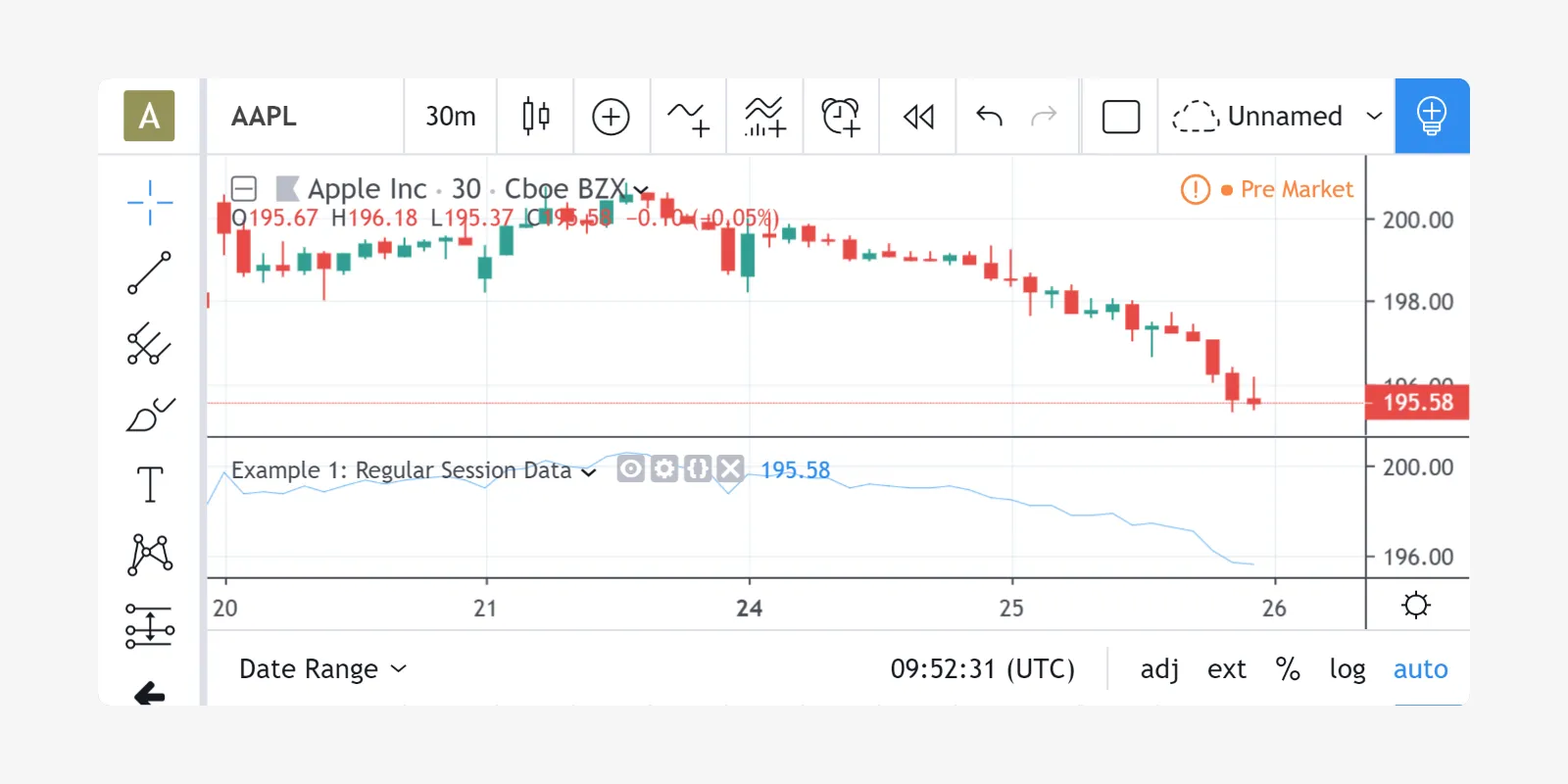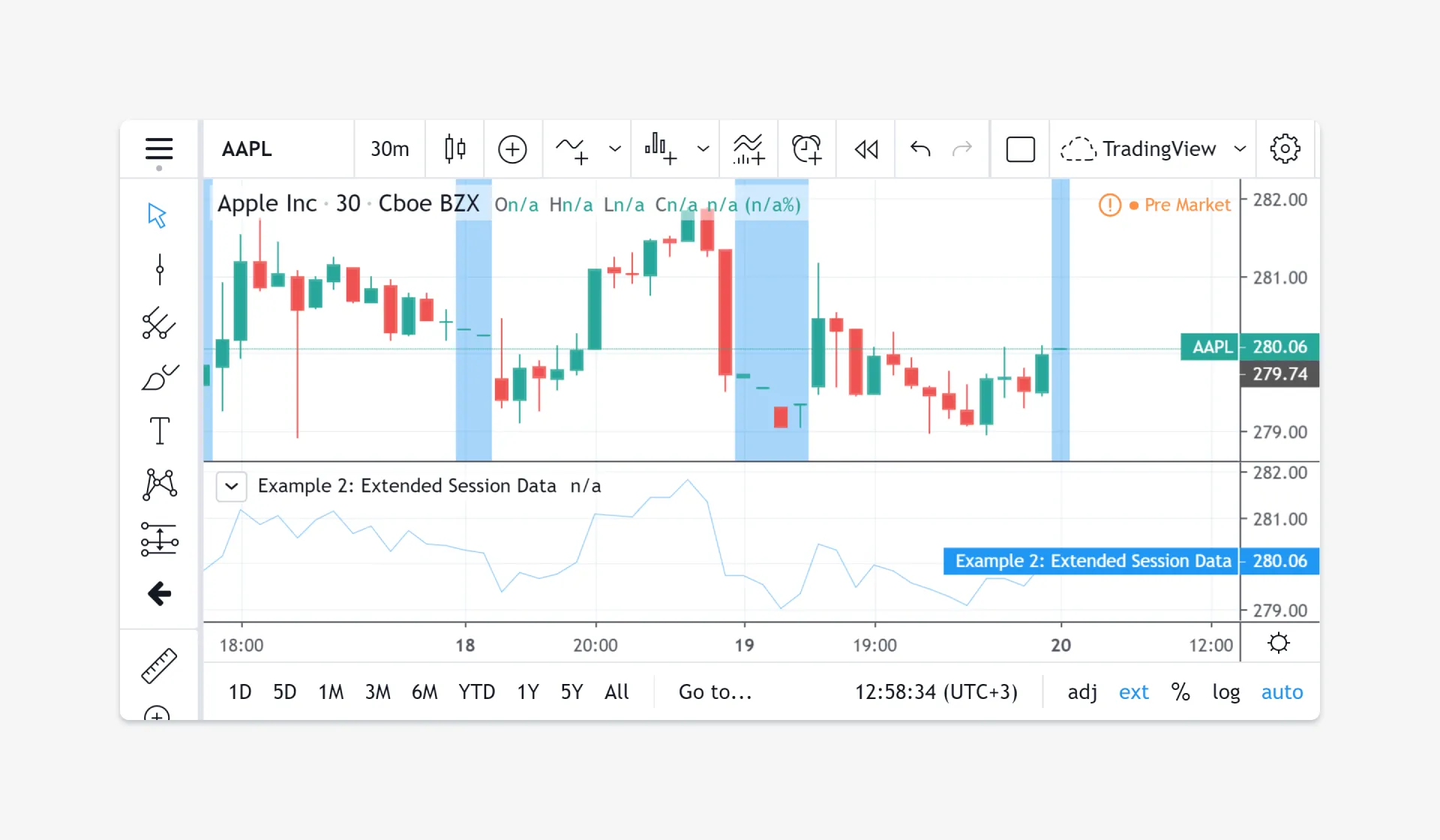Extended and regular sessions
On TradingView you can access extended hours sessions by right-clicking on a chart and choosing Settings Symbol Extended Hours (Intraday only). There are two types of sessions: regular (excluding pre- and post-market data) and extended (including pre- and post-market data). Pine scripts may request additional session data using the security function.
The security function can be called with a symbol name
(“EXCHANGE_PREFIX:TICKER
”, e.g., “BATS:AAPL
”) as its first
argument. Used this way, the security function will return data for
the regular session. For example:

If you want the security call to return extended session data, you
must first use the
tickerid
function to build security call’s first argument:
//@version=4 study(“Example 2: Extended Session Data”) t = tickerid(“BATS”, “AAPL”, session.extended) cc = security(t, timeframe.period, close, true) plot(cc, style=plot.style_linebr)

Notice that the previous chart’s gaps in the script’s plot are now filled. Also keep in mind that the background coloring on the chart is not produced by our example scripts; it is due to the chart’s settings showing extended hours.
The first argument of the tickerid function is an exchange prefix
(“BATS”) and the second argument is a ticker (“AAPL”). The third
argument specifies the type of the session (session.extended or
session.regular). So Example 1 could be rewritten as:
If you want to request the same session specification used for the
chart’s main symbol, omit the third argument; it is optional. Or, if
you want your code to explicitly declare your intention, use the
syminfo.session built-in variable as the third argument to tickerid
function, as it holds the session type of the chart’s main symbol: